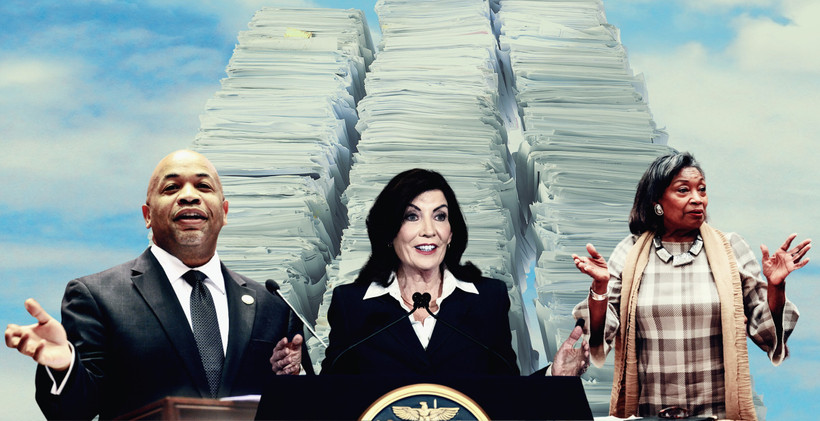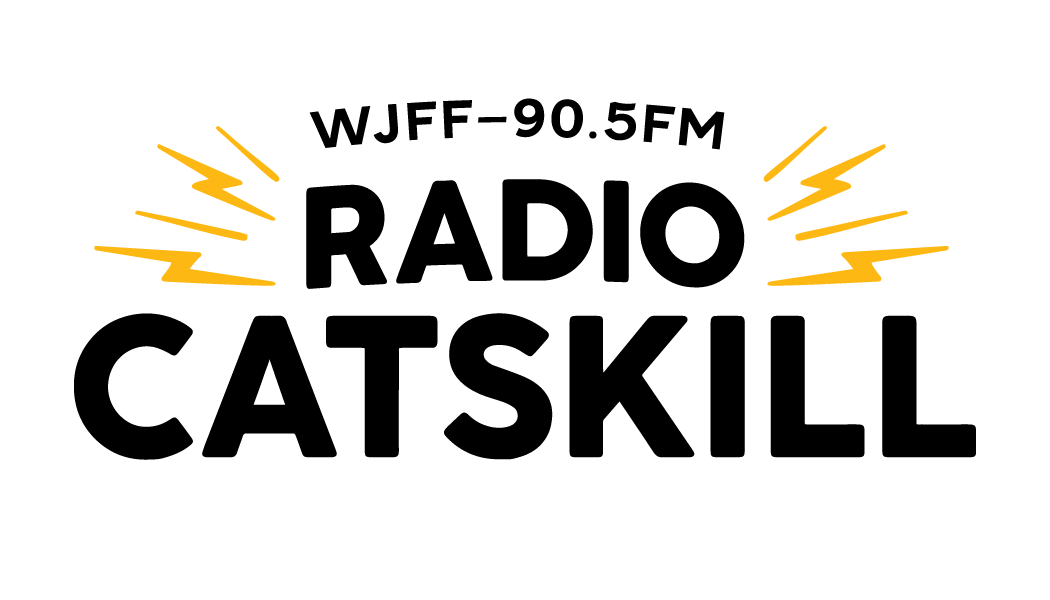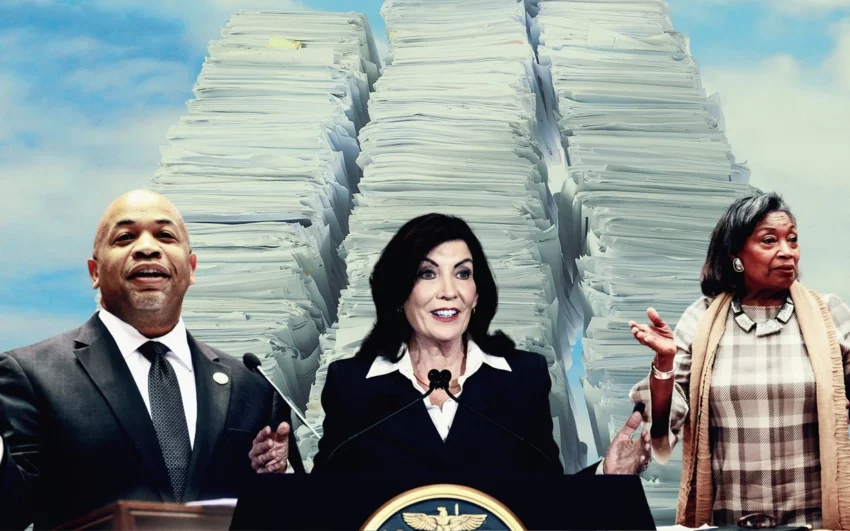This story originally appeared in New York Focus, a nonprofit news publication investigating power in New York. Sign up for their newsletter here.
NEW YORK STATE · March 11, 2024
How the New York State Budget Is Made
We answer your questions on the state’s notoriously opaque budget process.
By Sam Mellins , New York Focus

In the coming weeks, New York’s lawmakers will pass a budget that determines how the state will spend over $230 billion in public money. It’s a massive sum, bigger than most countries’ budgets, and outpacing every other state except California.
At stake are key questions for New York’s future. Will the state invest in treatment centers for people struggling with opioid addiction? Will it stop subsidizing the expansion of fossil fuel–based heating systems? With a declining incarcerated population, how many prisons can the state close?
When the houses of the state legislature introduce their budget proposals this week, negotiations over these issues — and many more — will kick off in earnest.
JUMP TO QUESTIONS
What is the state budget?
Where does the money come from?
What are the major steps in the budget process?
Who are the key players?
How does our process compare to other states?
Is the entire budget up for negotiation?
How does the public get involved?
Reader-submitted questions
In the coming weeks, New York Focus reporters will continue to closely cover the secretive process through which the state’s enormous, far-reaching budget is made. We’ll be analyzing dueling priorities, providing updates on the progress of negotiations, and explaining what it all means for New Yorkers across the state. First, we wanted to give readers a refresher — or introduction — to how the budget process works and why it matters, and to answer some questions from our newsletter subscribers. Buckle in!
What do you want to know about the budget? Send us your questions and we’ll continue to answer them in our newsletter.
Submit your budget questions and subscribe to our newsletter.
What is the state budget?
The budget is the state’s plan for how it will spend its money over the next year. It comprises thousands of pages of dense legal language spanning subjects from housing to transit. This year’s budget will likely allocate over $230 billion, with the biggest shares going to healthcare and education.
Despite its name, the budget isn’t limited to financial decisions; it’s also frequently used to enact laws that don’t involve spending money. Last year’s budget made it easier for judges to set bail and allowed more charter schools to open, for example, and this year, Governor Kathy Hochul’s budget proposal includes measures to make it easier to build housing in New York City and speed up the process for getting a liquor license.
Where does the money come from?
Most of the money spent in the budget comes from the taxes that New Yorkers pay to the state government. But a sizable portion is cash that the federal government gives New York to provide services ranging from highways and transit to health insurance for low-income residents. Hochul’s proposal this year included $129 billion in state funds, $85 billion in federal funds, and another $19 billion in mixed state and federal funds for construction and renovation projects, totaling $233 billion.
What are the major steps in the budget process?
Here’s the basic outline:
-
In the first few weeks of the year, the governor issues the “executive budget,” a comprehensive proposal for how the state should spend its funds.
-
A couple of months later, generally in early to mid-March, each house of the legislature responds with its own proposal, known as the “one-house budgets.”
-
The three parties enter into weeks of intense negotiations to resolve the differences. They’re supposed to come to an agreement by April 1, which is the start of the state’s fiscal year, but the process can drag on for days or even weeks past the deadline.
-
When the parties reach a deal, the legislature votes to approve the final budget, which goes to the governor to be signed into law. Everyone takes a deep breath and starts getting ready to do it again the next year.
Although the process is a three-way negotiation, the governor has the upper hand. The executive budget sets the framework for all subsequent discussion, and if legislators try to add additional spending items to the governor’s proposal, the governor can veto each item individually. That doesn’t generally happen, but the threat of a veto can enable the governor to rein in legislators’ desire to spend more.
When the Senate and Assembly issue their response budget proposals in March — also known as the “one-house” budgets — they’re more opening offers for negotiation than actual plans. No one expects that everything in the one-houses will be put into law. But once all three proposals are out, the subjects for debate are clear.
Who are the key players?
Three key parties dominate the process: the governor, the Senate majority leader, and the Assembly speaker. (They have historically been called the “three men in a room” — though two of them are now women.) Along with their senior advisors and staff, they conduct negotiations behind closed doors. Some key legislators also have significant influence, especially if they chair key committees or are longtime members who have built up influence over the years.
Most legislators play a limited role. Their main tools to advance their priorities are to pressure legislative leadership and to use public attention. Republicans generally aren’t included in negotiations. Democrats are kept more in the loop: Each house regularly holds “conferences” where legislative leaders and their staff share updates and get feedback from rank-and-file members as they work toward a deal.
How does our process compare to other states?
New York’s budget process is notoriously opaque. In a 2015 analysis by the Center for Public Integrity, New York ranked dead last among all states for accountability and transparency in its budget process. Not much has changed since then, and good government groups still lament the lack of avenues for citizens to have meaningful input or even follow along.
Perhaps the most glaring example of the lack of transparency is how the legislature actually votes on the budget. The mammoth bills are often introduced just hours before the legislature approves them, offering almost no time for lawmakers — let alone the public — to process and react to the final agreements. Voting often doesn’t finish until the middle of the night, when few New Yorkers are watching.
This isn’t how things are supposed to work. Under the state constitution, bills must be introduced three days before a vote happens, to leave time for public debate. But the governor can lift this requirement by issuing a “message of necessity,” allowing the bills to go to a vote immediately. These messages of necessity have become an Albany tradition, to the chagrin of good government watchdogs.
Is the entire budget up for negotiation?
Although negotiations over the budget get fierce, not everything is up for debate. In fact, most of the negotiations revolve around just a few billion dollars out of the hundreds that the state will spend. Last year, for example, Hochul initially proposed $227 billion in spending, and the state Assembly countered with $233 billion. It still took a month beyond the April 1 deadline for the two sides to work out their differences, and when the dust settled, they’d agreed on $229 billion.
Significant parts of the budget are more or less on autopilot. State agencies, like the Department of Health or State University of New York, need to be funded every year at roughly the same levels. Medicaid and public education are always the two biggest line items, and don’t generally fluctuate dramatically in cost. Still, significant debate can occur even when it comes to required spending areas. Hochul’s plan to cut aid for public schools by nearly half a billion dollars is set to be one of the most contentious parts of negotiations this year, for example. And the governor and legislature are pushing in opposite directions on Medicaid spending, with Hochul looking to save over $1 billion by giving home care workers a pay cut, among other measures, and most Democratic lawmakers backing a plan to fully fund hospitals’ Medicaid costs by tapping state reserves.
Beyond these required categories of spending, many items in the budget are “optional,” and can be slashed as a wide variety of programs compete for limited funds. Animal shelter funding might see a cut one year, or lawmakers might agree to fund a free bus program, among hundreds of options.
How does the public get involved?

The pride of the capitol / Navya Sriramaneni
The budget process is always accompanied by a flurry of lobbying, activism, and advocacy. White-shoe lobbyists lean on lawmakers on behalf of major corporations and industry groups. Advocacy groups hold rallies around the state and in Albany; a favorite spot within the state capitol is the “Million Dollar Staircase,” an enormous and ornate late-19th century structure that got its name thanks to its exorbitant construction cost. The public’s advocacy also frequently includes civil disobedience, with activists getting arrested outside the governor’s office or at other key locations.
Another opening for public input is the legislature’s series of budget hearings. Early each year, the legislature’s committees hold marathon hearings on most major topics covered by the budget, such as taxes, housing, and education. Any New Yorker can submit written testimony, and the committees select who will be invited to testify in person.

